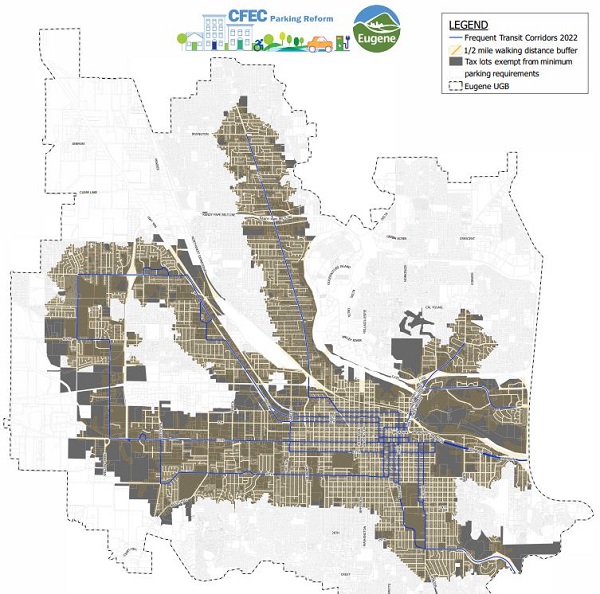Share your thoughts on the future of parking
2 min read
from Leah Rausch, Planning and Development Department
How should Eugene plan for parking cars throughout the city? Let us know by completing this short survey by May 8.
Pollution from transportation is responsible for about 38% of the state’s climate pollution. Eugene, Springfield, and other Oregon cities are required to encourage more climate-friendly development and reduce emissions from transportation.
In 2020, former Governor Kate Brown signed Executive Order 20-04 directing state agencies to promote cleaner vehicles, cleaner fuels, and less driving. This led to the creation of the Climate-Friendly and Equitable Communities (CFEC) requirements, which will result in changes to Eugene’s land use code and comprehensive housing and transportation plans over several years.
First up, Eugene will change its approach to off-street minimum parking requirements for new development, as required by state law.
To inform this choice, the City is reaching out and listening to residents to better understand the trade-offs of parking requirements with other local priorities and values.
- How can we adapt to climate change and plan a community that is flexible, sustainable, and affordable?
- Who decides if parking is needed on an individual lot?
- What actions are most equitable and effective?
- How do we plan for parking cars throughout the city?
In addition to completing the survey, you can register for a virtual information session on Wednesday, May 3 from 6 p.m. to 7 p.m. and see what’s coming next on Eugene’s CFEC webpage.
According to the Oregon Global Warming Commission‘s 2023 biennial report, Oregon emissions grew in 2021 to 19% above the 2020 goal.
Oregon’s emissions increased by 3 million metric tons of carbon dioxide equivalent (MTCO2e) as economic activity increased between 2020 and 2021.
The commission’s Roadmap suggested the 2035 GHG reduction goal can still be met without adding any new regulations. “If Oregon’s existing programs and regulations – many of which were recently adopted – are implemented and operated as planned with necessary staffing and resources, they can achieve meaningful GHG emission reductions,” the report stated.
The City also provides a downloadable version of the survey.



